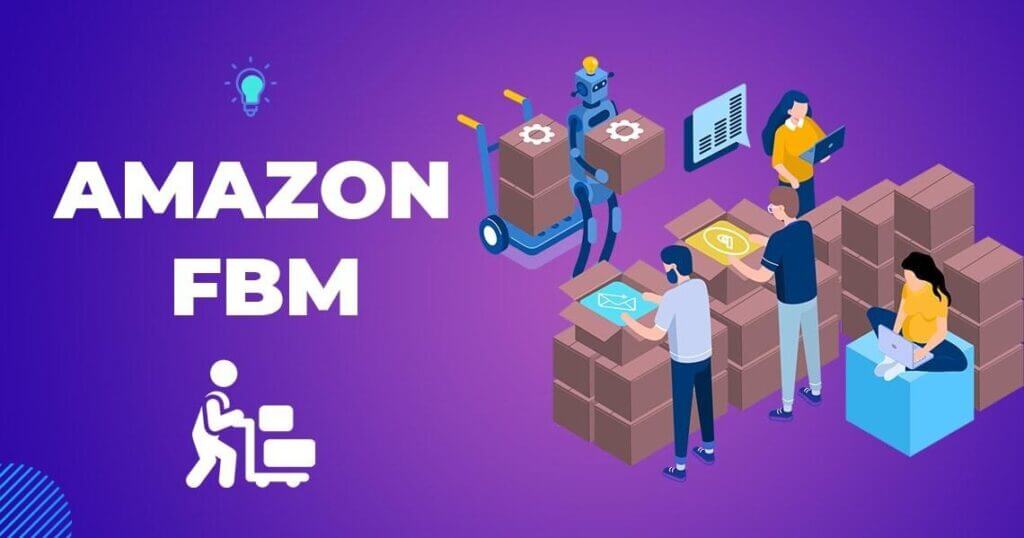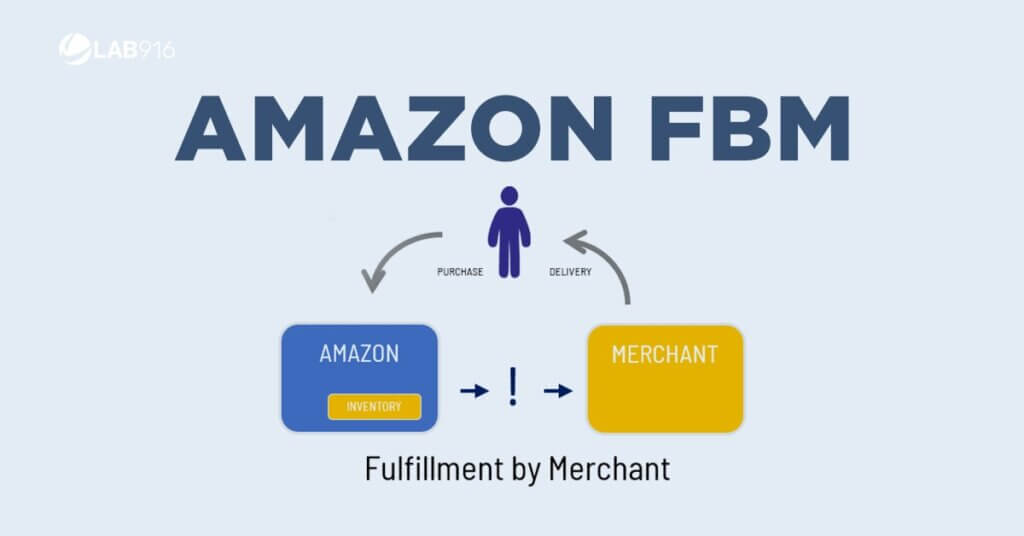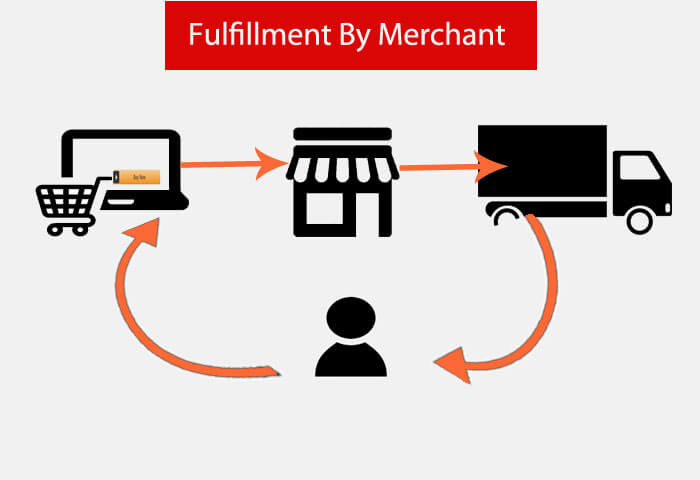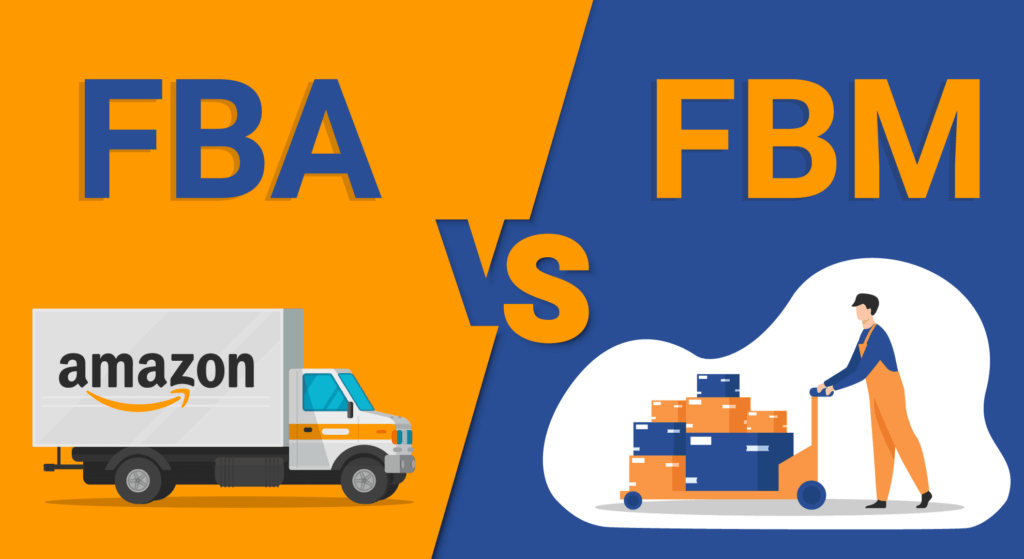Fulfillment by Merchant (FBM)
Introduction to Fulfillment by Merchant (FBM)
Fulfillment by Merchant (FBM) is a popular method for businesses to manage their order fulfillment and shipping without the assistance of a third-party service. FBM allows firms to handle the entire order fulfillment process, from packing and shipping to customer service, saving them money and giving them greater control over the customer experience.
In this article, we will explore the basics of Fulfillment by Merchant, how it works, how to set up an FBM account, best practices for FBM, and a comparison between FBM and Fulfillment by Amazon (FBA).
How Fulfillment by Merchant (FBM) Works
Fulfillment by Merchant (FBM) is a popular method for businesses to manage their order fulfillment and shipping without the assistance of a third-party service. FBM allows firms to handle the entire order fulfillment process, from packing and shipping to customer service, saving them money and giving them greater control over the customer experience.
This article will explore how FBM works and provide some tips for businesses considering this fulfillment method.
The FBM Process
The process of FBM is simple. After a customer orders, the merchant is responsible for packing the order, printing the shipping label, and delivering it to the carrier. Here are the critical steps of the FBM process:
- Receive the Order: Merchants receive orders directly from the sales channel (such as their website or a marketplace like Amazon).
- Pick and Pack: The merchant selects the products from their inventory and packs them into a shipping box.
- Print Shipping Label: The merchant prints and affixes a shipping label to the box.
- Deliver to Carrier: The merchant delivers the shipping box to the carrier (such as FedEx or UPS) for delivery to the customer.
- Provide Customer Service: The merchant is responsible for handling any customer service issues that arise, such as tracking packages or processing returns.
Advantages of FBM
FBM offers several advantages to businesses, including:
- Lower costs: FBM saves companies money by handling the entire fulfillment process rather than paying a third-party service.
- More control: Businesses have more control over the customer experience with FBM, as they are responsible for every aspect of the order fulfillment process.
- Branding: With FBM, businesses can include branding materials, such as promotional inserts or personalized packaging, to enhance the customer experience.
- Flexibility: FBM is a flexible fulfillment method that can be tailored to the needs of each business.
Disadvantages of FBM
FBM also has some drawbacks, including:
- Time-consuming: FBM requires businesses to handle every aspect of the order fulfillment process, which can be time-consuming.
- Limited resources: Smaller businesses may not have the resources to handle the entire fulfillment process.
- Logistics: FBM requires businesses to have a system for managing inventory, tracking packages, and handling returns.
Conclusion
Fulfillment by Merchant (FBM) is a popular fulfillment method that allows businesses to handle their order fulfillment and shipping. FBM offers several advantages: lower costs, more control, branding opportunities, and flexibility. However, FBM also has some disadvantages, such as being time-consuming and requiring resources and logistics. Businesses should carefully consider their options before choosing FBM as their fulfillment method.
Setting up Fulfillment by Merchant (FBM) as a Merchant
Fulfillment by Merchant (FBM) is a popular method for businesses to manage their order fulfillment and shipping without the assistance of a third-party service. FBM allows firms to handle the entire order fulfillment process, from packing and shipping to customer service, saving them money and giving them greater control over the customer experience.
This article will explore how to set up FBM as a merchant and provide some tips for businesses considering this fulfillment method.
Creating a Merchant Account
The first step in setting up FBM as a merchant is to create a merchant account with the sales channel you plan to use. This could be your website, a marketplace like Amazon or Etsy, or a social media platform like Facebook or Instagram. Here are the key steps to create a merchant account:
- Choose a Sales Channel: Determine which sales channel(s) you want to use to sell your products.
- Create an Account: Go to the website of your chosen sales channel and create a merchant account.
- Set Up Payment Method: Choose a payment method that works for your business, such as PayPal or a credit card.
- List Your Products: List your products on the sales channel, including product details, pricing, and images.
Managing Inventory
Once you have created your merchant account and listed your products, it is essential to manage your inventory effectively to ensure that you can fulfill orders promptly. Here are some tips for managing inventory:
- Keep Accurate Records: Keep track of your inventory levels in a spreadsheet or inventory management system.
- Reorder Products: Monitor your inventory levels and reorder products when needed to ensure you have enough inventory to fulfill orders.
- Restock Regularly: Plan to restock your inventory regularly to avoid running out of stock.
- Identify Bestsellers: Keep track of your bestsellers and adjust your inventory levels accordingly.
Listing Products for Sale
Once you have set up your merchant account and managed your inventory, it is time to list your products for sale. Here are some tips for recording your products:
- Accurate Product Descriptions: Write precise and detailed product descriptions to help customers make informed purchasing decisions.
- High-Quality Images: Use high-quality images to showcase your products and help them stand out from competitors.
- Competitive Pricing: Research your competition to set competitive pricing for your products.
- Promotions and Discounts: Promotions and discounts to attract new customers and incentivize repeat purchases.
Conclusion
They are setting up Fulfillment by Merchant (FBM) as a merchant requires creating a merchant account, managing inventory effectively, and listing products for sale. Accurate product descriptions, high-quality images, competitive pricing, and promotions are all critical factors when listing products for sale.
By carefully managing your inventory and setting up your merchant account effectively, you can succeed in collecting your order fulfillment and shipping.
Best Practices for Fulfillment by Merchant (FBM)
Fulfillment by Merchant (FBM) is a popular method for businesses to handle their order fulfillment and shipping. While FBM can save companies money and give them greater control over the customer experience, it requires careful management to ensure that orders are fulfilled on time and with high quality. In this article, we will explore some best practices for FBM that businesses can implement to improve their fulfillment process.
Streamline Order Fulfillment
To streamline the order fulfillment process, businesses can:
- Implement efficient packing processes: Use a packing station to organize and pack orders quickly and accurately.
- Invest in shipping supplies: Purchase shipping supplies in bulk to save money and ensure you have everything you need.
- Use shipping software: Use shipping software to print shipping labels and manage orders, which can save time and improve accuracy.
Provide Excellent Customer Service
Providing excellent customer service is critical for the success of any business. Here are some tips to improve customer service:
- Respond to customer inquiries quickly: Respond to customer inquiries within 24 hours to provide excellent service and improve customer satisfaction.
- Offer returns and exchanges: Offer hassle-free returns and businesses to provide a positive customer experience.
- Communicate shipping updates: Communicate shipping updates to customers to keep them informed about their order status.
Monitor Performance Metrics
To ensure that your FBM process is efficient and effective, monitor performance metrics such as:
- Order processing time: Monitor the time it takes to process orders and make improvements to streamline the process.
- Shipping time: Track shipping time to ensure that orders are delivered within the expected timeframe.
- Customer satisfaction: Monitor customer satisfaction metrics such as reviews and feedback to identify areas for improvement.
Manage Inventory Effectively
Managing inventory effectively is critical for businesses using FBM. Here are some tips for managing inventory effectively:
- Keep track of inventory levels: Use inventory management software to keep track of inventory levels and reorder products when needed.
- Forecast demand: Forecast demand to ensure you have enough inventory to meet customer demand.
- Monitor product performance: Monitor the performance of your products and adjust inventory levels accordingly.
Optimize Your Listings
To optimize your listings, consider the following:
- Optimize product titles: Use relevant and descriptive titles with essential keywords to improve visibility.
- Use high-quality images: Use high-quality images that showcase your products to attract customers.
- Monitor pricing: Monitor pricing to ensure that your products are competitively priced.
Conclusion
Fulfillment by Merchant (FBM) requires careful management to ensure that orders are fulfilled on time and with high quality. By streamlining order fulfillment, providing excellent customer service, monitoring performance metrics, managing inventory effectively, and optimizing listings, businesses can use FBM to collect their order fulfillment and shipping. By following these best practices, companies can improve their FBM process and provide a positive customer experience.
FBM vs. Fulfillment by Amazon (FBA)
When fulfilling orders, businesses have two main options: Fulfillment by Merchant (FBM) or Fulfillment by Amazon (FBA). Both options have pros and cons; companies must weigh these carefully to determine the best method for their needs. This article will explore the differences between FBM and FBA to help businesses make informed decisions.
Cost
One of the most significant differences between FBM and FBA is cost. FBA is generally more expensive than FBM, as Amazon charges fees for storage, fulfillment, and other services. These fees can add up quickly, especially for businesses with high orders. FBM, on the other hand, allows companies to handle their fulfillment and shipping, which can be more cost-effective in the long run.
Control
FBM gives businesses more control over the order fulfillment process, as they are responsible for packing and shipping orders. Companies can customize their packing materials, shipping options, and customer experience. FBA, on the other hand, gives Amazon control over the fulfillment process, which can limit a business’s ability to customize the customer experience.
Shipping Speed
FBA generally offers faster shipping speeds than FBM. Amazon’s vast warehouse and fulfillment center network allow them to ship orders quickly and efficiently. FBM, on the other hand, requires businesses to handle their shipping, which can result in longer shipping times.
Eligibility Requirements
FBA has eligibility requirements that businesses must meet to use the service, including specific product categories and performance metrics. FBM, on the other hand, does not have these requirements, making it a more accessible option for businesses.
Returns
FBA handles returns on behalf of businesses, which can be a convenient option. However, companies using FBM are responsible for managing their returns, which can be more time-consuming but allows more control over the return process.
Branding
FBM allows businesses to include their branding and promotional materials in shipments, which can help build brand awareness and loyalty. FBA, on the other hand, does not allow for this level of customization.
Conclusion
FBM and FBA have pros and cons, and businesses must weigh these carefully to determine which method is best for their needs. FBM is generally more cost-effective and gives companies more control over the fulfillment process, while FBA offers faster shipping speeds and convenient return handling. Businesses can decide which fulfillment method suits them by considering costs, power, shipping speed, eligibility requirements, returns, and branding.
Final Conclusion:
In conclusion, Fulfillment by Merchant (FBM) is a fulfillment option that allows businesses to handle their order fulfillment and shipping. While FBM may require more effort and resources on the part of the business, it also offers more control and customization over the customer experience.
Businesses that use FBM must be prepared to handle all aspects of order fulfillment, from packing and shipping to handling returns. This can be more time-consuming and challenging than using a service like Fulfillment by Amazon (FBA). Still, it can also be more cost-effective and offer more control over the customer experience.
When considering whether to use FBM, businesses should consider cost, control, shipping speed, eligibility requirements, returns, and branding. By weighing these factors carefully, companies can determine whether FBM is the right fulfillment option for their needs.
Ultimately, FBM and FBA are viable options for businesses seeking to outsource their fulfillment needs. The choice between the two will depend on various factors, including the business’s size, product category, and desired level of control over the fulfillment process. By considering these factors carefully, companies can make an informed decision and choose the fulfillment option that best meets their needs.
F.A.Q
What does fulfilled by merchant mean?
“Fulfilled by Merchant” (FBM) means that the merchant or seller handles the entire order fulfillment process, including packing and shipping the product to the customer. With FBM, the seller stores their inventory and is responsible for packing, shipping, and delivering the product to the customer when an order is placed.
FBM is often used by small and medium-sized businesses that want more control over the customer experience and want to save on the cost of outsourcing fulfillment to a third-party provider. In contrast, “Fulfilled by Amazon” (FBA) is a service offered by Amazon where sellers can store their inventory in Amazon’s warehouses, and Amazon handles the packing, shipping, and delivery of the product to the customer.
Do Many Amazon Sellers Use Amazon FBM?
Many Amazon sellers use Amazon FBM (Fulfillment by Merchant) as a fulfillment option to handle their order fulfillment and shipping. While Amazon FBA (Fulfillment by Amazon) is a popular choice for many Amazon sellers due to its convenience and ease of use, FBM offers more control and customization over the customer experience.
Some Amazon sellers may also choose to use FBM if their products have unique characteristics, such as large or fragile items, that make it difficult or expensive to store and fulfill them through Amazon FBA. Additionally, using FBM can be more cost-effective for some sellers, as they can save on the fees associated with using Amazon FBA. Ultimately, the decision to use Amazon FBM or FBA will depend on various factors, such as the seller’s business goals, product category, and fulfillment needs.







